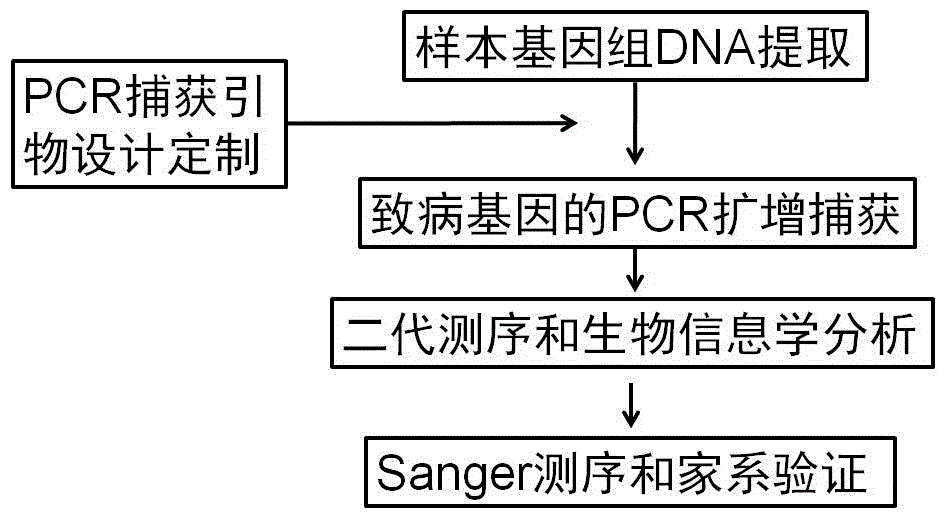Human idiopathic basal ganglia calcification pathogenic gene and detection method thereof
A technology of basal ganglia calcification and pathogenic genes, applied in chemical instruments and methods, biochemical equipment and methods, genetic engineering, etc., can solve problems such as high cost, time-consuming and laborious
- Summary
- Abstract
- Description
- Claims
- Application Information
AI Technical Summary
Problems solved by technology
Method used
Image
Examples
Embodiment 1
[0039] According to the detailed medical history and family history investigation, as well as standardized nervous system physical examination and related auxiliary examination information, 10 IBGC patients in the hospital were selected to perform disease-causing gene detection and analysis under the condition that they signed the informed consent.
[0040] (1) PCR capture of 4 pathogenic genes
[0041] Get 10ml of patient's cubital venous blood (EDTA anticoagulant), extract genomic DNA with QIAamp DNA Blood Mini Kit (Qiagen, Germany), use it as a template, use the PCR capture primer set in Table 1 to prepare an amplification system according to Table 2, and The reaction was carried out according to the conditions in Table 3 on a conventional PCR instrument.
[0042] (2) Analysis of gene mutation spectrum by next-generation sequencing
[0043] The multiple PCR amplification products in (1) were sent to Shanghai Jingneng Biotechnology Co., Ltd. for next-generation sequencing. ...
Embodiment 2
[0059] Another 12 IBGC patients different from Example 1 and 200 normal human blood samples were taken for analysis, the method was the same as that of Example 2, and the results are shown in Table 7.
[0060] Table 7 Detection and verification results of pathogenic genes in 12 IBGC patients
[0061]
[0062] The mutations of IBGC patients in Table 5 have been verified by Sanger sequencing, and all mutated genes belong to the 7 gene mutation forms; and in 200 normal people, there are no such mutations, thus from both positive and negative aspects It is verified again that the IBGC pathogenic gene provided by the present invention and the detection method provided by the present invention have good reliability and accuracy.
[0063] Although the present invention has been described in terms of preferred specific embodiments, various modifications and variations of the present invention will occur to those skilled in the art. Any modifications, equivalent replacements, impro...
PUM
 Login to View More
Login to View More Abstract
Description
Claims
Application Information
 Login to View More
Login to View More - R&D
- Intellectual Property
- Life Sciences
- Materials
- Tech Scout
- Unparalleled Data Quality
- Higher Quality Content
- 60% Fewer Hallucinations
Browse by: Latest US Patents, China's latest patents, Technical Efficacy Thesaurus, Application Domain, Technology Topic, Popular Technical Reports.
© 2025 PatSnap. All rights reserved.Legal|Privacy policy|Modern Slavery Act Transparency Statement|Sitemap|About US| Contact US: help@patsnap.com



